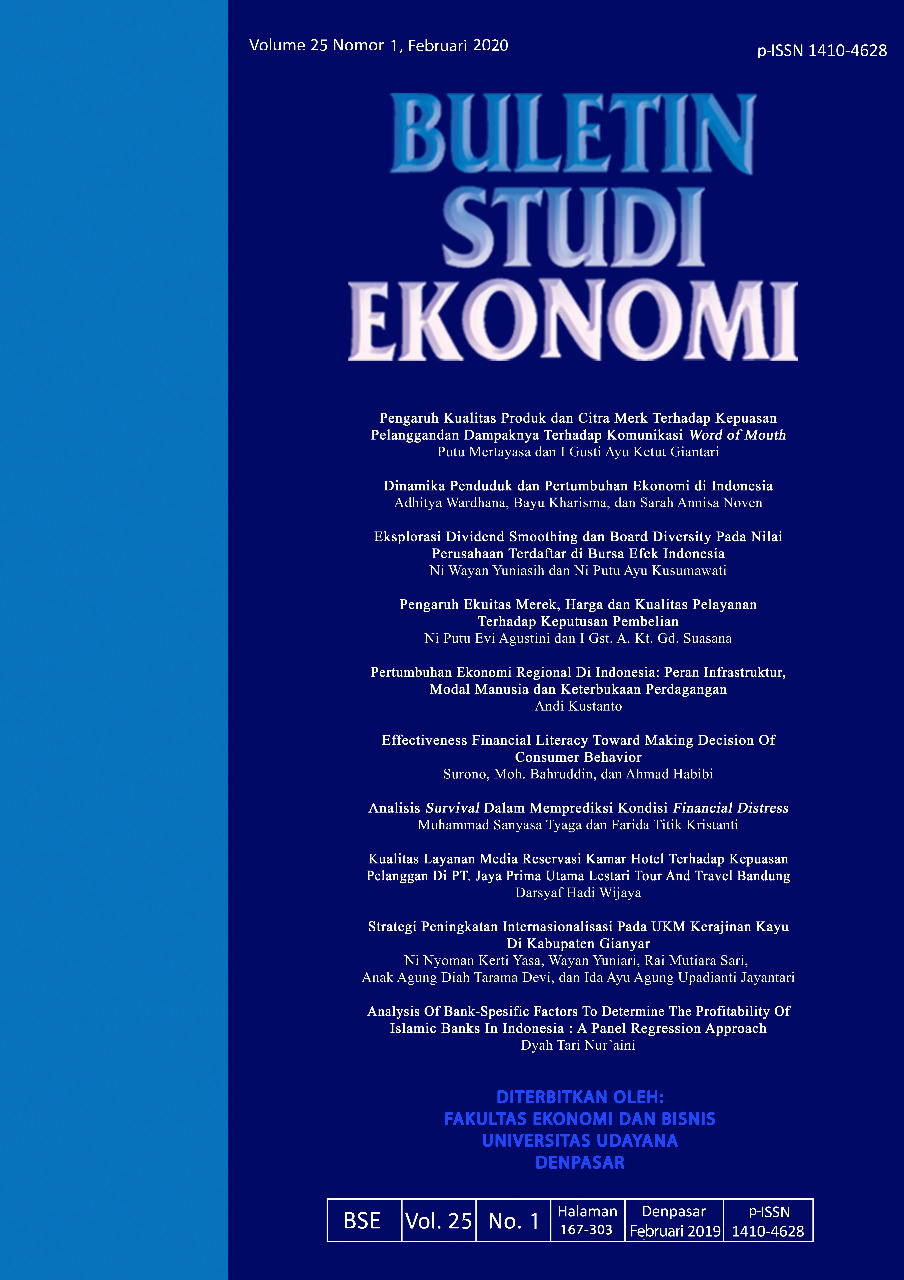DINAMIKA PENDUDUK DAN PERTUMBUHAN EKONOMI DI INDONESIA
Abstract
This study aims to see the effect of population dynamics variables on economic growth in Indonesia. This study uses the Ordinary Least Square model with time series data from 1986 to 2016. The data used are population dynamics variables, such as number of fertilities, infant mortality, with the variable control are the amount of labor, savings and government expenditure on economic growth measured through Gross Domestic Product. The results os the study showed that the fertility amount in Indonesia has a negative effect on the amount of economic growth in Indonesia, which means that increasing population will reduce economic growth in Indonesia. then, variable infant mortality has a negative influence on economic growth in Indonesia. Fertility variables and the population of productive age have a positive effect on labor force participation rates. Control variables, like savings and government expenditure, also have a positive effect on economic growth in Indonesia.




















